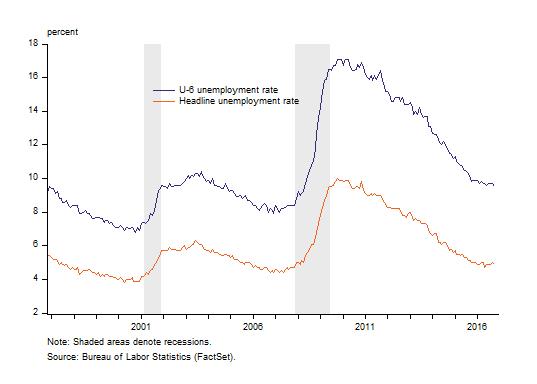A Broader Measure of Unemployment Declines
The headline unemployment rate decreased from 5 percent in September to 4.9 percent in October. The unemployment rate decreased in October because the number of unemployed workers decreased, despite the size of the labor force decreasing. The number of unemployed workers decreased by 152,000 to 7.8 million, while the labor force declined 195,000 to 159 million.
The headline unemployment rate is calculated by dividing the number of unemployed workers who have looked for work in the past four weeks by the size of the labor force. The labor force includes both unemployed and employed workers.
A broader measure of unemployment, the U-6 unemployment rate, also fell in October. The U-6 unemployment rate includes headline unemployment, but its definition of unemployment also includes part-time workers who would prefer full-time, as well as marginally attached members of the workforce.
Part-time workers may be part-time because of slack business conditions or because they were only able to find part-time work. Marginally attached workers are available for work, but have not looked for a job in the past four weeks, although they have looked for a job sometime in the past year. The U-6 unemployment rate has fallen from a high of 17.1 percent to a post-recession low of 9.5 percent in October.
Even though the U-6 unemployment rate has fallen significantly, it remains high by historical standards. Between 2001 and 2007, the U-6 unemployment rate was as low as 7.9 percent. Between the early 1990s and the new millennium, the U-6 unemployment rate bottomed at 6.8 percent.
Click here to sign up for the Daily Economy weekly digest!









